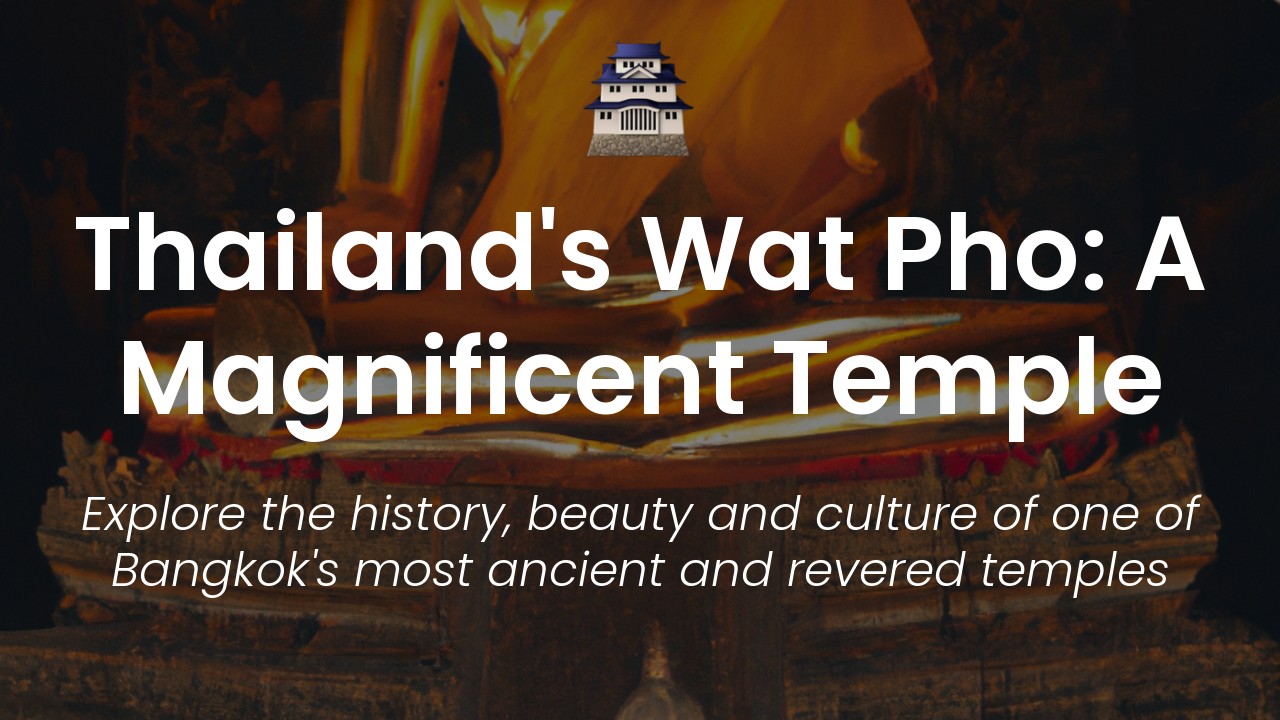As a proud Thai woman, I have always been fascinated by the spiritual richness and cultural diversity of my country. One of the things that makes Thailand so unique is its abundance of exquisitely designed temples, which serve not only as religious centers but also as cultural landmarks that reflect Thailand's art and architecture.
Bangkok, the capital of Thailand, is famed for its magnificent temples that draw visitors from all around the world. Each temple has its own unique story, architecture, and significance. Exploring these sacred wonders is an excellent way to experience Thai culture and gain a sense of the country's spiritual roots.
In this blog post, I want to take you on a journey across Bangkok's temples and show you the beauty and magic of these ancient structures. Whether you are a curious traveler, a culture enthusiast or simply looking to deepen your knowledge of Thai culture, this article is for you. Let's explore the most revered and lesser-known temples of Bangkok, and uncover the secrets they hold.
Wat Phra Kaew
As one of Bangkok's most sacred temples, Wat Phra Kaew is home to the famous Emerald Buddha – a statue made entirely of green jade. This magnificent temple is located within the Grand Palace compound, which means it's easily accessible to tourists who want to see it.
When you visit Wat Phra Kaew, it's important to show respect by wearing modest clothing that covers your shoulders and knees. You'll also need to remove your shoes before entering the temple grounds.
Once you're inside, take some time to admire the intricate carvings and beautiful architecture of the temple buildings. The Emerald Buddha itself is located within the Ordination Hall, and visitors aren't allowed to take photos or touch the statue. However, the sheer beauty and peacefulness of the temple is a sight to behold.
Wat Pho
Another must-see temple in Bangkok is Wat Pho, which is located just a few minutes away from Wat Phra Kaew by foot. This temple is known for its giant reclining Buddha statue that measures an impressive 46 meters in length and 15 meters in height.
Aside from the giant Buddha, Wat Pho is also home to more than 1000 other Buddha images – many of which are located in the temple's decorative pagodas. Visitors can also enjoy traditional Thai massages at the temple's massage school, which is one of the oldest in Thailand.
Wat Arun
If you're looking for a temple that offers stunning views across the city, then Wat Arun is a great choice. This temple is located along the Chao Phraya River, and it's known for its unique prang (tower) which is covered in colorful glass and Chinese porcelain.
To get to the top of the prang, you'll need to climb a steep staircase that offers a bit of a challenge – but the panoramic views across the river and the city are definitely worth it.
Wat Saket (Golden Mount)
Another temple that offers great views across Bangkok is Wat Saket, which is also known as the Golden Mount. This temple is located on a man-made hill that was built during the reign of King Rama III, and it offers stunning views of the city from its golden chedi (stupa).
Climbing to the top of the Golden Mount is a bit of an adventure in itself, as visitors will need to ascend a series of steep steps that wind around the hill. However, once you reach the top, you'll be rewarded with breathtaking views across the city.
Wat Benchamabophit
If you're interested in seeing a temple that combines both traditional Thai and European architectural styles, then Wat Benchamabophit is a great choice. This temple, which is also known as the Marble Temple, is made entirely of white Carrara marble.
The temple is known for its beautiful courtyard, which is surrounded by dozens of bronze Buddha statues. Inside, visitors can admire the intricate marble carvings and beautiful stained glass windows.
Wat Traimit (Golden Buddha)
Finally, if you want to see the world's largest solid gold Buddha statue, then you'll need to head to Wat Traimit. This temple is located in Bangkok's Chinatown district, and the gold Buddha statue that it houses weighs an incredible 5.5 tons.
The statue was discovered by accident during the 1950s, when workers were attempting to move it and it broke through the plaster casing that had concealed its true beauty for centuries.







